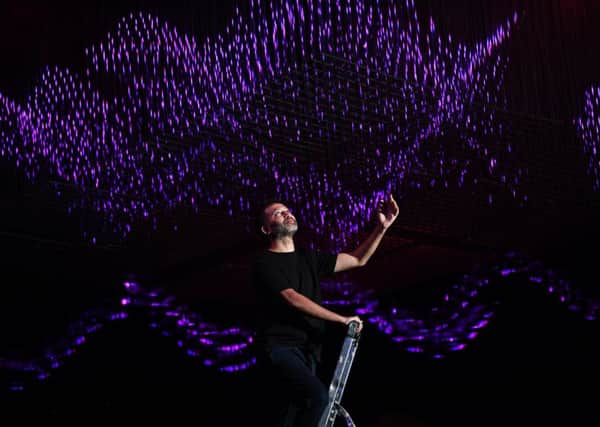Festival review: Sonica, various venues, Glasgow


Over at the Art School, Argentinian composer Nicolás Varchausky had very different intentions in his unsettling Money Desk (***). Combining the noises from three automatic banknote counting machines – the whispered riffling through tenners, the beeping error alerts – with field recordings from Buenos Aires, all processed through his laptop, he created an increasingly obsessive cacophony inspired by the city’s illegal money changers. And while it was a troubling reminder of the dirty reality of money in an age of smooth electronic transfers, it felt like Money Desk’s underlying concept was stronger than its execution.
A Reich-like episode feeding increasingly large wads into the machines hinted at a stronger, process-driven framework for the work, but soon passed in favour of less convincing material focusing more on general atmosphere.
Advertisement
Hide AdAdvertisement
Hide AdAmong Sonica’s wealth of installations, Joan Brossa didn’t make me (*****) from Catalan duo cabosanroque at the CCA stands out for its sheer visual and sonic ambition.
Inspired by the Catalan poet and artist of their title, cabosanroque have assembled a mountain of junk – old typewriters, half-filled glasses, bottle tops, tape measures and much more – that they cunningly bring to sonic life in what feels like a symphony of abstract noise, launched by Wagner’s Parsifal Prelude from a crackling record player and moving through a nocturne and scherzo before reaching its raucous, contrapuntal finale. It’s a breaktakingly intricate, endlessly fascinating experience that truly immerses the viewer/listener in its beautiful but rather creepy world.
Just as unsettling, over at the Lighthouse, is Navid Navab and Michael Montanaro’s steampunk Aquaphoneia (****), whose bubbling, dripping, spitting contraptions purport to transform speech and sound (feel free to bellow into the installation’s listening horn) into water, steam, air and back into transformed sound. There’s something deeply perplexing about hearing your transfigured voice apparently emerging from a column of steam or a dripping pipe, though this darkly magical, hilariously nonsensical work seems rather to play with our notions of scientific expertise. To chill out, head for Sonica’s nature-themed films back at Tramway. The rippling patterns of wind in the grass on Arthur’s Seat in Lars Koens and Demelza Kooij’s Graminoids (****) end up tingling the scalp like an ASMR video, while Glasgow-based Kian McEvoy’s sublime Entanglement (****) conjures an alien, psychedelic world through its imperceptible focus adjustments on lichen, water and bark in Dundreggan Estate in the Highlands.
Seductive and semi-abstract, both provide just the kind of immersion in ravishing visuals and sounds at which Sonica excels. David Kettle
Sonica continues until 10 November